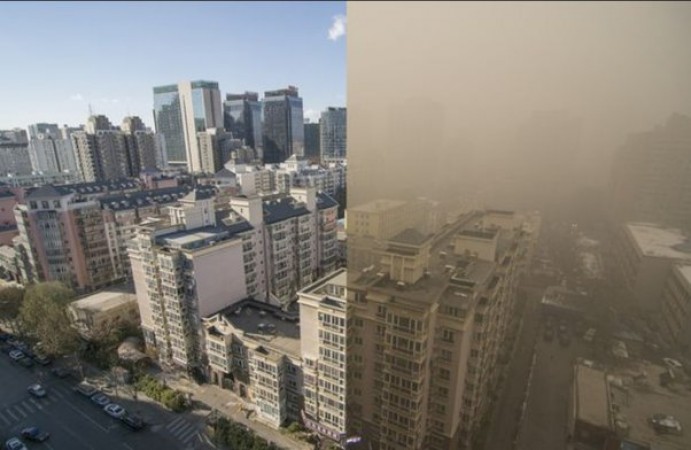
Smog and fog are two atmospheric phenomena that often affect urban areas, but they differ significantly in their composition, formation, and impacts on the environment and human health.
Smog: The Urban Haze
Smog is a term derived from "smoke" and "fog," and it primarily consists of pollutants such as nitrogen oxides (NOx), volatile organic compounds (VOCs), sulfur dioxide (SO2), and particulate matter (PM). These pollutants are released into the atmosphere from various sources, including vehicles, industrial activities, power plants, and agricultural processes.
Formation of Smog
The formation of smog is a complex process influenced by atmospheric conditions and the presence of precursor pollutants. Smog typically occurs when emissions from these sources react with sunlight and atmospheric compounds such as oxygen and water vapor. This reaction leads to the formation of secondary pollutants, including ground-level ozone (O3), which is a key component of smog.
Types of Smog
There are two primary types of smog: "Classical Smog" and "Photochemical Smog."
Classical Smog
Also known as "London Smog" or "Sulfurous Smog," classical smog is commonly associated with cities that rely heavily on coal burning for heating and industrial processes. It is characterized by high concentrations of sulfur dioxide (SO2) and particulate matter (PM). In classical smog, sulfur dioxide reacts with atmospheric moisture to form sulfuric acid droplets, which contribute to the haze and visibility reduction.
Photochemical Smog
Photochemical smog, also known as "Los Angeles-type smog" or "Summer Smog," is prevalent in urban areas with high traffic density and abundant sunlight. It forms when nitrogen oxides (NOx) and volatile organic compounds (VOCs) emitted from vehicles, industrial facilities, and other sources react with sunlight. This reaction produces a complex mixture of pollutants, including ground-level ozone (O3), peroxyacetyl nitrate (PAN), and other secondary organic aerosols.
Impacts of Smog
Smog poses significant risks to human health, the environment, and ecosystems. Exposure to smog can cause a range of respiratory problems, including asthma exacerbation, bronchitis, and chronic obstructive pulmonary disease (COPD). It can also lead to cardiovascular issues, such as heart attacks and strokes, particularly in vulnerable populations such as children, the elderly, and individuals with pre-existing health conditions. Additionally, smog can damage crops, forests, and aquatic ecosystems, leading to reduced agricultural productivity, biodiversity loss, and ecosystem degradation.
Fog: Nature's Mist
Unlike smog, which is primarily a result of human activities, fog is a natural meteorological phenomenon characterized by a low-lying cloud composed of tiny water droplets suspended in the air.
Formation of Fog
Fog forms when the air near the ground cools to the point where it cannot hold its moisture content, leading to condensation and the formation of tiny water droplets. This cooling can occur through various processes, including radiation cooling, advection, and upslope motion.
Types of Fog
Several types of fog exist, each formed through different atmospheric processes:
Radiation Fog: Also known as ground fog or valley fog, radiation fog forms during clear, calm nights when the ground loses heat rapidly through radiation. As the air near the surface cools, it reaches its dew point, causing water vapor to condense into fog.
Advection Fog: Advection fog occurs when warm, moist air moves over a cooler surface, such as when maritime air blows over colder land or water. As the warm air cools, it reaches its dew point, leading to the formation of fog.
Upslope Fog: Upslope fog develops as moist air is forced upward along elevated terrain, such as hills or mountains. As the air rises, it cools and condenses into fog, creating low-lying clouds along the slopes.
Impacts of Fog
While fog can reduce visibility and affect transportation, it generally poses fewer health risks compared to smog. However, dense fog can still create hazardous driving conditions, leading to traffic accidents and disruptions in air and sea travel. Fog can also have positive impacts on ecosystems by providing moisture for plant growth and replenishing groundwater reserves.
Distinguishing Characteristics
One of the key differences between smog and fog is their composition and formation. Smog is primarily composed of pollutants released from human activities, while fog consists of water droplets formed through natural atmospheric processes. Additionally, smog tends to occur in urban areas with high levels of pollution, whereas fog can occur in both urban and rural environments, depending on atmospheric conditions. In conclusion, smog and fog are distinct atmospheric conditions with different compositions, formations, and impacts. While smog is primarily associated with urban pollution and poses significant risks to human health and the environment, fog is a natural meteorological phenomenon that can affect visibility and transportation but generally poses fewer health risks. Understanding these differences is crucial for addressing environmental challenges and implementing strategies to mitigate the effects of air pollution on public health and safety.
Eat these things in case of diarrhea, you will get relief soon